As in classful addressing, some blocks of addresses or some addresses in each block have been reserved for the special purpose & that’s why they are termed as special IP addresses. The special addresses of classful addressing were inherited by the classless addressing when it was introduced in 1996.
There can be an entire block of addresses reserved for special addressing or there can be some addresses in each block that are reserved for special addressing. In this section, we will discuss both, special blocks of addresses and special addresses in each block.
1. Special Blocks of Addresses
There are some blocks of addresses in IPv4 address space that are reserved for a special objective. The special blocks of addresses are listed below:
All Zeros Address
The all-zeros address block 0.0.0.0/32 is a special block in Ipv4 address space. The length of the prefix here is 32. The number of addresses in this block is equal to 232-32 = 20 = 1. So, this block has only one address with all the 32 bits as zero. This address is the first address in the IPv4 address space.
Any host having this IP address means the host is not connected to the TC/IP network. When the host wants to get connected to the internet, it sends a request packet to the bootstrap server which is also called a DHCP server.
The packet sent by the host to DHCP server has source address as 0.0.0.0 and 225.225.225.225 as the destination address. The DHCP server then assigns the IP address to the host and host then get connected to the Internet.
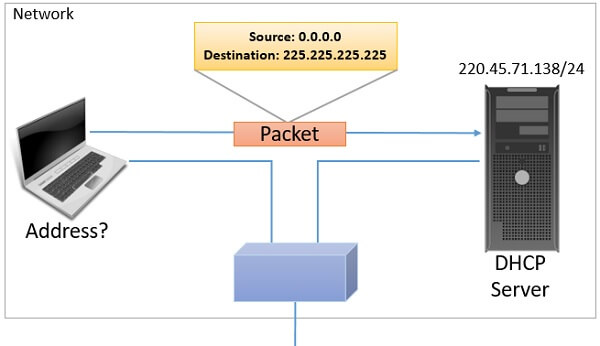
All One Address
The block 225.225.225.225/32 is also a special block in IPv4 address space. Here, all the 32 bits of IPv4 address is ‘1‘. The length of the prefix here is 32. The number of addresses in this special block can be calculated as 232-32 = 20 = 1. This is the last address in IPv4 address space. This address is also called Limited Broadcast Address we will see the reason why it is a limited broadcast address.
If a host wants to send the message to every other host in the current network, which means the host wants to broadcast a message in the current network. Then the host uses this address as the destination address in the IPv4 packet and sends it on the network.
But, whenever the router finds the IPv4 packets with 225.225.225.225 as the destination address, it restricts the packet to be broadcasted in the local network only. Hence, it is called a limited broadcast address as it limits the packet to be broadcasted in the local network only.
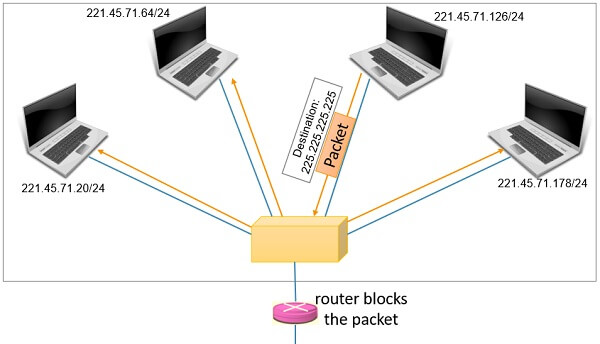
Loopback Addresses
The special block 127.0.0.0/8 has addresses which are used as loopback addresses. Now, the prefix length here is 8 so, the number of addresses can be calculated as 232-8 = 224 = 1,67,77,216. This special block has 1,67,77,216 addresses. If we consider this address in classful addressing, then this block is the last block of class A.
All the addresses starting with 127. should be considered as loopback addresses. The loopback address can only be the destination address of a packet. The packet with loopback address never leaves the machine from which it is sent, it just returns back to the source.
For example, it can be used to check whether the NIC is properly functioning or not. To check the network application on the system. Out of 1,67,77,216 loopback addresses only 127.0.0.1 is used rest 1,67,77,215 addresses are just total wastage of addresses.
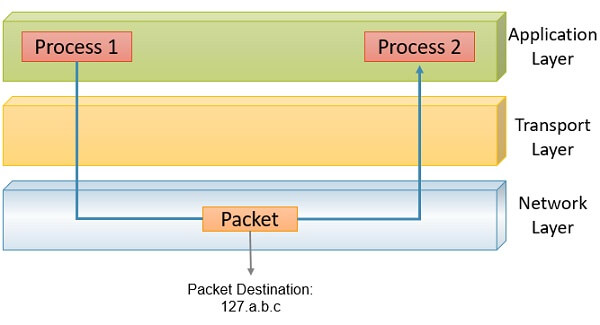
Private Addresses
As the name suggests the private IP addresses are never used globally. The packet with a private IP address is not routed on the internet. The private IP addresses are configured by the administrator of the network. Devices on the same network use private IP addresses to converse with each other. They do not require the internet for their communication. Like, the file servers, desktops and printers can communicate with each other without the requirement of internet.
But, when they want to communicate with the device out of their network they translate a private IP address into the public IP address using NAT.
The range of private IP addresses is given below:
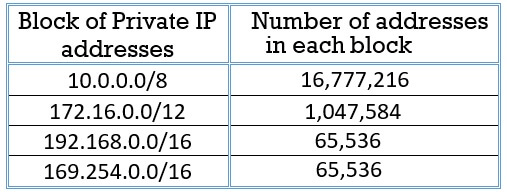
Multicast Addresses
The block 224.0.0.0/4 has the multicast address. The length of the prefix is 4. The number of addresses used for multicast communication is 232-4 = 228 = 26,84,35,456.
The multicast address is assigned to the group of the host instead of one single host. The packet sent to the multicast address is delivered to all the host of that group.
2. Special IP Addresses in Each Block
There are some special addresses reserved in each block. There are two special addresses which are in each block:
Network Address
As we have seen in classful and classless addressing the first address of the block is the network address itself. The first address of the block has all the suffix bits as ‘0’. The network address is not allocated to any of the hosts in the network.
If the block has been subnetted and the network has been divided into subnetwork then the first address of subnetwork will play the same role as the network address. The first address of the subnetwork is also termed as subnetwork address and this subnetwork address will not be assigned to any host in the subnetwork.
In case the assigned block is too small then it is not possible to consider some of the addresses in the block as special address.
Direct Broadcast Address
As first address in the block is reserved as the network address. The last address of the block is reserved as a direct broadcast address. The direct-broadcast address has all its suffix bits as ‘1’.
Whenever the router obtains the IPv4 packet with a destination address who’s all suffix bits are 1 it broadcast that packet to all the host in the specific network. Remember the direct broadcast address will always be used as the destination address in IPv4 packet.
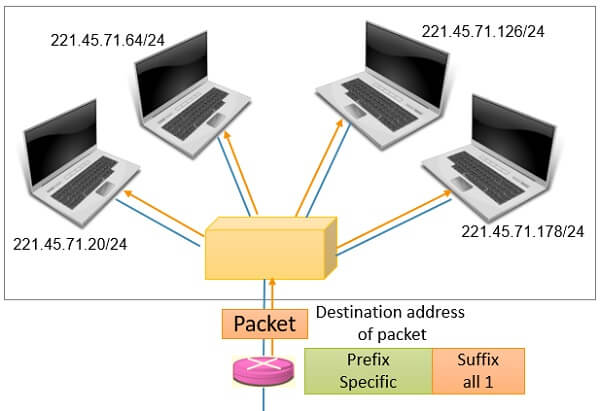
So, this was all about the special addresses and special blocks of addresses.

Johan Ingvast says
Thanks for an informative article.